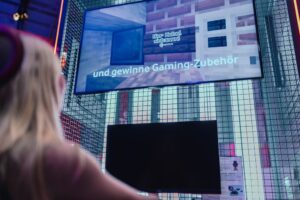
After more than 40 years of operation, DTVE is closing its doors and our website will no longer be updated daily. Thank you for all of your support.
Nokia and Vodafone Deutschland test L4S low latency technology

Low-latency applications include gaming. (Image copyright: Vodafone)
Nokia’s research arm Nokia Bell Labs and Vodafone Deutschland’s Fixed Access Centre of Excellence say they have successfully conducted a world-first demonstration of L4S (Low Latency Low Loss Scalable) internet technology.
The test involved the building of a passive optical network (PON) using Nokia technology. The pair say that L4S can significantly improve the broadband experience, significantly reducing latency during data transmission.
The pair claim that the technology could better enable delay-free online gaming, video conferencing and real-time applications in the areas of telemedicine and telemobility. Vodafone Deutschland plans to adopt it across its cable and mobile networks over the next few years.
The trial used a standard laptop that was connected to the Internet via an FTTH connection. With L4S, over a fully utilized WiFi broadband connection, the access time to a website decreased from 550 to 12 milliseconds. Latency was reduced to 1.05 milliseconds when an Ethernet cable was used instead of WiFi.
L4S was developed by Nokia Bell Labs and is supported by the Internet standards organization – the Internet Engineering Task Force (IETF) – and is intended to reduce unwanted delays in data transmission in the future.
Nokia and Vodafone conducted the L4S demonstration over a passive optical network (PON) built using Nokia technology. It consisted of a broadband network gateway (BNG), an optical PON line terminal (OLT), multiple optical PON network terminals (ONTs), and Wi-Fi access points. The partners said that the L4S network technology consistently achieved near-zero packet queuing delay, regardless of the traffic load on the network.
“Fast networks are the backbone of our society. Short latency times will play an increasingly important role in the future. The L4S test by Vodafone and Nokia shows that real-time communication is technically possible even under difficult conditions in a heavily loaded network – with consistently low latency times that are many times shorter than the blink of an eye,” says Tanja Richter, Network Manager. Boss at Vodafone Germany. “It is conceivable that this key technology could be used in our German FTTH, HFC and mobile communications infrastructure in a few years. This gives us time to further develop not only the technology, but also the latency-critical applications.”


